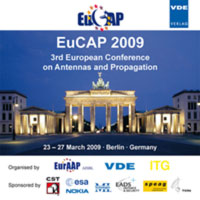Spatial Decorrelation of VHF and UHF Trans- Ionospheric Signals Measured at Ascension Island
Conference: EuCAP 2009 - 3rd European Conference on Antennas and Propagation
03/23/2009 - 03/27/2009 at Berlin, Germany
Proceedings: EuCAP 2009
Pages: 5Language: englishTyp: PDF
Personal VDE Members are entitled to a 10% discount on this title
Authors:
Kamp, Max van de; Cannon, Paul (Department of Electronic and Electrical Engineering, University of Bath, Claverton Down, Bath, BA2 7AY, United Kingdom)
Cannon, Paul (Radio Operating Environments, QinetiQ, Malvern, WR14 3PS, United Kingdom)
Abstract:
The effect of spatial decorrelation of signals of space-based synthetic-aperture radars by equatorial ionospheric turbulence, is studied by monitoring 150 and 400 MHz signals from LEO beacon satellites on an array of spaced antennas located on Ascension Island, and analysing the cross-correlations of the phases of the received signals. The special property of this approach is that it does not convolve the spatial fluctuations with the movement of the satellite. The geometrical component of the phase difference between antennas is accurately removed by adjusting the satellite position using the measured phases. As expected, the phase of VHF signals is much more affected by scintillation than the UHF phase. In the example given, the spatial correlation over 130 m falls to zero at VHF and 0.55 at UHF. Correlations over longer distances have been determined using a novel ‘phase reconstruction’ technique. In the absence of scintillation the decorrelation distance is ~10 km for both frequencies. With increasing scintillation, the decorrelation distance decreases to around 100 m at VHF and 300 m at UHF.


